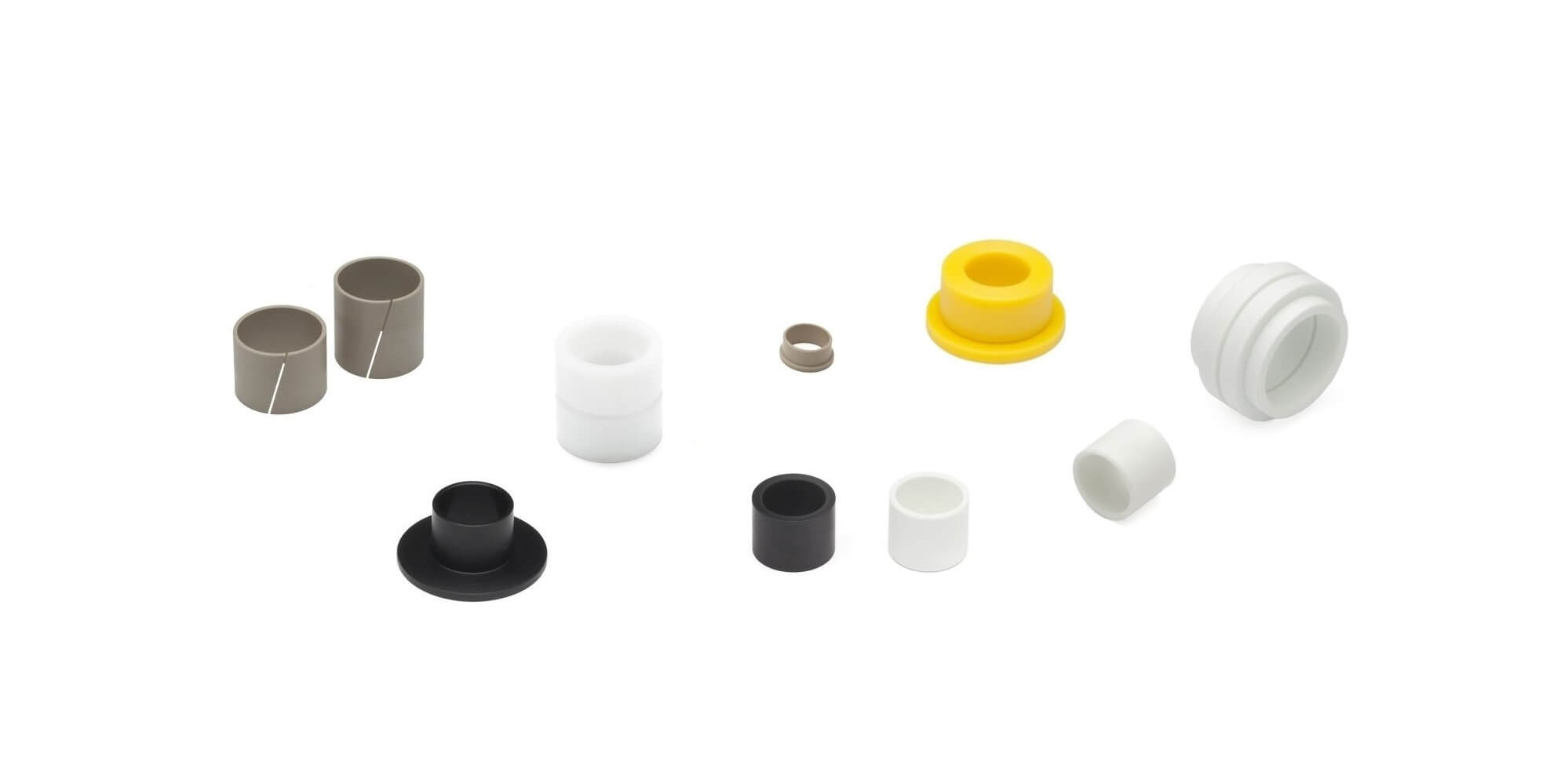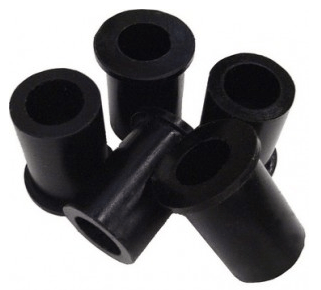
Are there specific guidelines for recycling or disposing of nylon bushings at the end of their life cycle?
Yes, there are specific guidelines for recycling or disposing of nylon bushings at the end of their life cycle. Here are some considerations:
1. Recycling:
– Nylon bushings, being made of a thermoplastic material, are generally recyclable. However, the specific recycling guidelines may vary depending on the composition of the nylon and the recycling facilities available in your area.
– Check with local recycling centers or waste management authorities to determine if they accept nylon bushings for recycling. They can provide information on the collection methods, sorting requirements, and any specific instructions for preparing the bushings for recycling.
– It’s important to separate nylon bushings from other materials and ensure they are clean and free of contaminants before recycling. Removing any metal inserts or other components attached to the bushings can facilitate the recycling process.
2. Specialty Recycling Programs:
– In some cases, there may be specialty recycling programs or initiatives specifically designed for industrial components like nylon bushings. These programs focus on recycling materials that are commonly used in industrial applications and may offer specialized recycling processes.
– Research and inquire about any such programs available in your region or industry. These programs may have specific collection points or partnerships with recycling facilities that can handle nylon bushings effectively.
3. Manufacturer Take-Back Programs:
– Some manufacturers or suppliers of nylon bushings may have take-back programs in place. These programs allow customers to return their used bushings to the manufacturer or supplier for proper recycling or disposal.
– Contact the manufacturer or supplier of the nylon bushings and inquire about any take-back programs they offer. They can provide guidance on the process, collection points, or specific instructions for returning the bushings.
4. Local Regulations and Guidelines:
– Be aware of any local regulations or guidelines regarding the disposal of nylon bushings. Different regions may have specific requirements or restrictions on the disposal methods for certain types of materials.
– Check with local environmental agencies or waste management authorities to understand the regulations in your area. They can provide information on proper disposal methods, landfill restrictions, or any hazardous waste classification that may apply to nylon bushings.
5. Reuse or Repurpose:
– Instead of recycling or disposing of nylon bushings, consider exploring opportunities for reuse or repurposing. Depending on their condition and functionality, nylon bushings can potentially be used in other applications or donated to organizations that can utilize them.
– Connect with local community organizations, educational institutions, or makerspaces that may have a need for industrial components like nylon bushings. They may accept donations or provide guidance on how to repurpose the bushings effectively.
It’s important to follow the guidelines and regulations in your specific region when recycling or disposing of nylon bushings. By doing so, you can ensure proper waste management, minimize environmental impact, and contribute to sustainability efforts.

What are the common sizes and dimensions of nylon bushings, and how do I choose the right one for my application?
If you are wondering about the common sizes and dimensions of nylon bushings and how to choose the right one for your application, here’s a detailed explanation:
1. Common Sizes and Dimensions:
– Nylon bushings come in a variety of sizes and dimensions to accommodate different shaft diameters and housing bores. The specific sizes and dimensions can vary based on the manufacturer and the intended application.
– Common sizes for nylon bushings typically range from small diameters, such as 6 mm (0.24 inches), to larger diameters, such as 50 mm (1.97 inches) or more. The length or height of the bushings can also vary depending on the design and requirements.
– Nylon bushings may have standard metric or imperial sizes, and they are often categorized by their inner diameter (shaft size) and outer diameter (housing bore size).
2. Choosing the Right Nylon Bushing:
– Determine the shaft diameter and housing bore diameter of your application. These dimensions will help you select a nylon bushing with the appropriate inner and outer diameters.
– Consider the clearance or tolerance requirements for your application. Nylon bushings are available in different clearance fits, such as sliding fits or press fits, to accommodate specific clearance or interference requirements between the shaft and housing.
– Assess the load capacity and expected operating conditions of your application. Different nylon bushings may have varying load capacities and performance characteristics, so choose a bushing that can handle the anticipated loads and environmental factors.
– Take into account the specific requirements of your application, such as temperature resistance, chemical compatibility, or electrical insulation properties. Nylon bushings with additional features or modifications may be available to meet these specific needs.
– Consult the manufacturer’s specifications or technical documentation for the nylon bushings you are considering. This information will provide details on the recommended applications, load capacities, dimensions, and other relevant factors.
– If you are unsure about the selection process, reach out to the manufacturer or supplier for assistance. They can provide guidance based on your application requirements and help you choose the right nylon bushing.
It is important to note that selecting the right nylon bushing involves considering various factors, including size, dimensions, clearance, load capacity, operating conditions, and specific application requirements. By carefully assessing these factors and consulting with manufacturers or suppliers, you can choose a nylon bushing that is suitable for your application and ensures optimal performance and longevity.

Can I get guidance on selecting nylon bushings based on factors like load capacity and speed?
If you are seeking guidance on selecting nylon bushings based on factors such as load capacity and speed, here’s a detailed explanation:
1. Load Capacity:
– Consider the maximum load or force that the nylon bushing will need to withstand in your application. This can be determined by analyzing the forces involved, such as static loads, dynamic loads, or impact loads.
– Check the manufacturer’s specifications or technical datasheets for the nylon bushings you are considering. Look for the maximum load capacity or load ratings provided by the manufacturer.
– Ensure that the selected nylon bushing has a load capacity that exceeds the expected loads in your application to ensure reliable performance and avoid premature failure.
2. Speed:
– Evaluate the speed at which the nylon bushing will operate in your application. Speed can impact the friction, heat generation, and wear characteristics of the bushing.
– Check the manufacturer’s specifications or technical datasheets for the maximum recommended speed or velocity for the nylon bushings. Exceeding the recommended speed can lead to increased friction, heat buildup, and accelerated wear.
– Consider the lubrication method for the bushing. Some nylon bushings may require additional lubrication to reduce friction and dissipate heat at higher speeds.
3. PV Value:
– The PV value is a measure of the pressure (P) and velocity (V) applied to the nylon bushing. It is calculated by multiplying the load or pressure per unit area by the sliding speed.
– Consult the manufacturer’s specifications or technical datasheets to determine the PV limits of the nylon bushings. Exceeding the recommended PV value can result in excessive wear, heat generation, and reduced performance.
4. Operating Conditions:
– Consider the operating conditions of your application, including temperature, humidity, and exposure to chemicals or environmental factors. These factors can influence the performance and durability of nylon bushings.
– Ensure that the selected nylon bushings are compatible with the specific operating conditions. For example, if your application involves high temperatures, look for heat-stabilized nylon bushings or alternative materials with higher temperature resistance.
5. Consult with Manufacturers or Suppliers:
– Reach out to manufacturers or suppliers specializing in nylon bushings. They can provide guidance on selecting the appropriate bushings based on your specific load capacity and speed requirements.
– Provide detailed information about your application, including the expected loads, speeds, operating conditions, and any other relevant factors. The manufacturer or supplier can assist you in choosing the most suitable nylon bushings for your needs.
By considering factors such as load capacity, speed, PV value, operating conditions, and seeking guidance from manufacturers or suppliers, you can make informed decisions when selecting nylon bushings that can effectively meet the performance requirements of your application.


editor by CX 2024-04-24